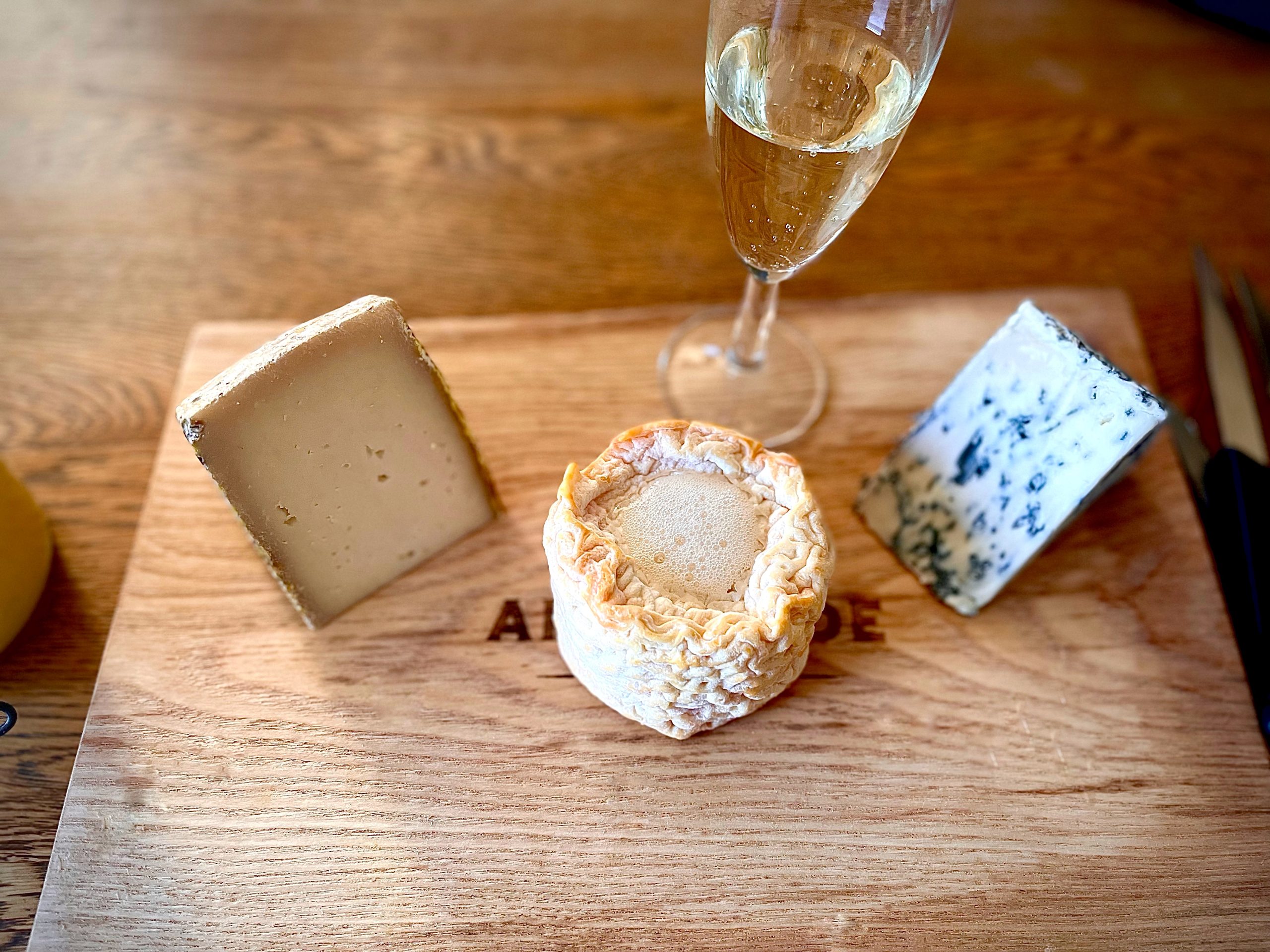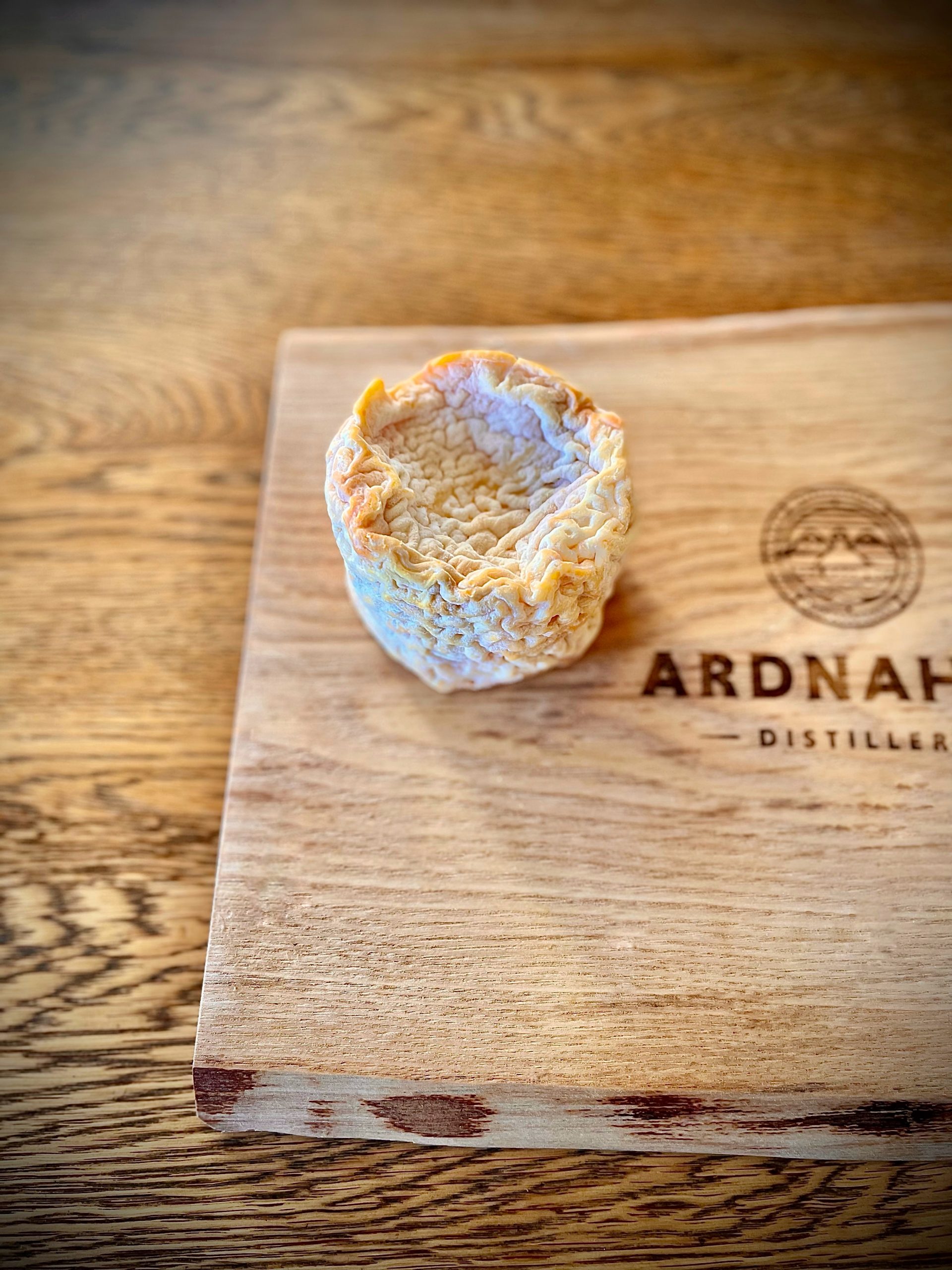Cheese of the month – Petit Langres

The first French cheese to feature as my cheese of the month is not the brilliant Brie de Meaux or the classic Camembert de Normandie. It is an equally beloved cheese – the perfect Petit Langres.
History of washed-rind cheese
Sweaty socks, farmyard animals, ammonia – the pungency of washed-rind cheeses can get a bad reputation of being overly stinky, but what actually gives them their distinct aroma?
With washed-rind cheeses, also referred to as ‘smear-ripened cheeses’, the clue is in the description. They are washed in a brine solution which sometimes includes different types of alcohol. Some cheeses will only be washed once or twice before being left to age, others will be washed a few times a day during the maturation process. It’s this washing that helps to impart flavour and gives the cheeses their distinct texture, which can be quite squidgy or sticky.
This process can also leave these cheeses smelling particularly pungent. This is due to the production of bacteria called brevibacterium linens (also known as b-linens) which releases a compound of sulphur as the cheese matures. The cheeses are left to mature for about three to four weeks, which allows the aroma of these cheeses to develop and become quite pronounced. In fact the classic French washed-rind cheese Epoisses is so infamously intense it is said to be banned on public transport in France. However, if you can get past the funk, the actual taste of these cheeses is often much milder than their aroma.
It is believed that washed-rind cheeses were created by monks in the Middle Ages. In order to stop the cheeses they had produced from drying out during the ageing process, they would wash them in ale or brandy, as clean drinking water was in short supply. Being matured in damp cellars also imparted a sticky exterior to the cheese.
Examples of washed-rind cheese include:
- Stinking Bishop – Produced in Gloucestershire and made with vegetarian rennet and cow’s milk. The exterior of the cheese is washed in perry (a cider made from pears) once before it is matured in a wrap of beech wood for 2-3 weeks. The cheese (and the pears used in the washed-rind process) are named after local farmer Frederick Bishop, who was known to be quite a difficult character!
- Rollright – Also produced in Gloucestershire by King Stone Dairy. Rollright is inspired by the French washed-rind cheese Vacherin du Haut-Doubs. It’s wrapped in a spruce bark band and washed in brine for three weeks.
- St James – Made with sheep’s milk from the Lacaune breed of sheep on the Holker Estate in Cumbria. The farm uses non-intensive practices which means the sheep are only milked once a day. The flavour of the cheese will vary at different times of year depending on what the sheep have grazed on. Over the course of three or four weeks, the cheese is washed in a brine solution and is turned three times a week.
- Gruyère – An apline style cheese made in the mountains of Switzerland. Its curds are heated and it is then dry salted and washed in brine during the ageing process. This results in a hard washed-rind cheese with a drier and waxy texture.
- Taleggio – Another alpine-style cheese produced in the Lombardy region of Italy. It was traditionally made in small batches as a way of preserving milk and is often compared to Brie in flavour.
- Epoisses – Produced in Burgundy, France and washed in Marc de Bourgogne brandy, Epoisses’ origins can be traced back to the 16th century. At its height, over 300 different producers were making Epoisses in the 1900s but by 1950 it had died out. Six years later it was reintroduced by two farming brothers named Berthaut. It has a PDO status, which means it must be made in the Côte-d’Or, Yonne or Haute-Marne areas of Burgundy and Champagne Ardenne.
Langres cheese
Langres, or Petit Langres, is a fantastic example of a washed-rind cheese. This decadent creamy cheese hails from the Champagne region of France and takes its name from the town where it is produced. It is washed in a brine and annatto solution, which imparts flavour and gives the cheese its distinctive orange wrinkly rind. The brine contains Marc de Champagne or Marc de Bourgogne, a brandy made from the leftover grape skins, stalks and seeds from the wine-making process.
The cheese achieved an Appellation d’Origine Contrôlée (AOC) status in the 1990s, which means that it can only be produced in the Cote-d’Or, Haute Marne or Vosges regions.
Langres is not turned as it ages, which results in the sunken well in the top of the cheese called a ‘fontaine’. The traditional way to serve Langres to pour a little champagne into this well and let the bubbles dissolve into the cheese just before serving.
Young versions of the cheese are more mild and citrusy. As the cheese matures, its strength intensifies. The texture becomes more liquified and the umami and meaty flavours become more prominent.
Key facts
| From: | Champagne, France |
| Milk: | Cow’s milk |
| Age: | Aged for 4 weeks + |
| Strength and style of cheese: | Medium, soft, washed-rind |
| Vegetarian: | No |
| Pasteurised: | No |
| Tasting notes: | Creamy, buttery, fruity, salty, tangy, pungent, meaty, boozy |
Drinks pairing
This is a great example of a washed-rind cheese and a good option to start with if you’re a little scared of pungent cheeses.
The flavour is meaty and creamy, the rind is mushroomy with a slight musty tang. There are similarities with Brie and it has a great texture – some people have said that the particularly wrinkled rind looks like a brain. Because the cheese ripens from the outside-in, the cheese near the rind is deliciously gooey, but it becomes more citrusy, sour and firm towards the middle.
In terms of drinks pairings, you could of course opt to serve this cheese with the traditional champagne. I’ve matched Petit Langres with a Limoux sparkling wine. The bubbles in the fizz work perfectly with the creaminess of the cheese, both allowing the other to sing. If you’re looking for less expensive wine options, a light red (Pinot Noir, Merlot) or a medium-bodied white (Viognier, Pinot Gris) would work well. You could even match it with the brandy that it’s washed in.
Washed-rind cheeses marry particularly well with fruit beers. I also matched this cheese with the fruity Rubis Raspberry Saison from Horsforth Brewery. Paired together you get the delicate taste of almonds. The beer helps to enhance the cheese’s creamy and salty notes and the raspberry flavour doesn’t dominate. My guests and I were in agreement that this is one of the best examples of a washed-rind cheese available. I would really encourage you to give this a go, it pairs perfectly with so many different flavours, including my recipe for zingy and creamy Lemon cheese.

